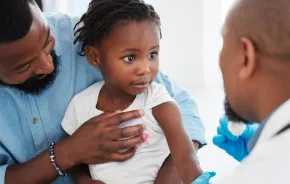About the time they turn 11, children begin to realize the world is filled with twice as many people as they thought-- and half of them are the opposite sex.
Triggered by hormones, the discovery is as old as the human race -- and so is the angst that this milestone can cause for children and parents alike.
When it comes to opposite-sex friendships among tweens, the questions that nag parents most are: What is "normal" and how has "normal" changed since they grew up?
The truth, uncomforting as it may be, is this: It all depends. "There's a huge range of normalcy and it's all part of a child's personality," says Jerry Jackson, a Bellevue child psychologist.
Make no mistake, though. When girls and boys stop thinking the opposite sex is yucky, the birds and the bees are almost always to blame. "Once the hormones start kicking in, the opposite sex suddenly exists and they don't have cooties anymore," says Kent child psychologist Cherie Valeithian.
Attraction to the opposite sex is part of nature's game plan. An innate ability to act on that attraction is not. Learning how to approach, appreciate and understand someone of the opposite gender is an acquired skill, and the tween years are the time when people take their first awkward steps down that bumpy road.
"Think of it as a course in pre-dating," says Anita Gurian, M.D., an assistant professor of psychiatry at the New York University Child Study Center and executive editor of the center's Web site, AboutOurKids.org. "This is a time when children are learning to be comfortable with the opposite sex."
Federal Way resident Michelle Gridley couldn't tell exactly when her 17-year-old daughter, Madison, first became interested in boys because she was very social from a young age and always had friends of both sexes. On the other hand, her 13-year-old son, McKinley, has always been shy, so when he recently began "making sure his hair looks perfect in the morning," she figured something was up. "The phone rings all the time and it's girls -- that's another clue," she says.
Gridley's approach to her children's discovery of the opposite sex is one of cautious acceptance. "I'm pretty protective," she says. "As long as I know the kids and I know their families, I'm OK. When it's kids I don't know, then I'm uncomfortable."
No matter how innocent they may be, friendships that form between boys and girls at this age almost always involve a distinct -- if nascent -- sexual undercurrent. "Kids can have [opposite-sex] friendships that are not really based on sexuality, but it's always there -- and that's normal," Gurian says.
So-called group dating is one way that tweens test the water. Three or four girls and three or four boys will "just hang out together," Valeithian says. "It's like a transition phase between same-sex friendships and coupling." In this situation, Jackson says, it's more about "friendship and getting to know the opposite sex than sexuality."
Valeithian worries, however, that today's tweens are rushing through this transition phase, adding that the media -- music, movies, television -- has a huge influence. "Our society pushes them toward [one-on-one] dating relationships so early," she notes.
The problem with one-on-one relationships is the "do-they-like-me/don't-they-like-me" dynamic, experts say. One-on-one relationships can drive tweens to "put on an act" instead of really getting to know each other, Valeithian says. "The more opportunity they have to interact without pairing off, the better," she says. "That way, they don't have to play a role they're not ready for."
About the same time tweens start noticing the opposite sex, they're making the leap from elementary school to middle school/junior high, where older tweens become role models. "That first year, they don't mix [between] genders much," says Gerald Denman, a former junior high principal and current director of diversity affairs for the Puyallup School District. "They're all waiting to see what's acceptable. The next year is when they come into their own."
By eighth or ninth grade, tweens can "be very focused on wanting to have someone of the opposite sex around," Denman says. Mostly, it's all about biology. Yet other forces do come into play. Some girls, for example, may prefer the lack of drama boys typically bring to friendships, while some boys may appreciate the greater sensitivity exhibited by girls, Denman notes.
Perhaps the best advice for parents of tweens is to let nature take its course -- with a vigilant eye. Children must learn to walk before they can run. Likewise, they must begin to relate to the opposite sex as adolescents if they are going to relate -- and, at the appropriate stage, pair up -- as young adults. "It's a necessary part of growing up to at least have casual friends of the opposite gender," Valeithian says. "Without that, it's hard to make that transition."
Brad Broberg is a freelance writer and former newspaper reporter and editor who lives in Federal Way with his 12-year-old daughter, Rachel.
Online resources
- www.aboutourkids.org - New York University Child Study Center.
- www.preteenagerstoday.com - iParenting Media Network
- www.childdevelopmentinfo.com - Web site of the Child Development Institute founded by Dr. Robert Myers, clinical child psychologist.











